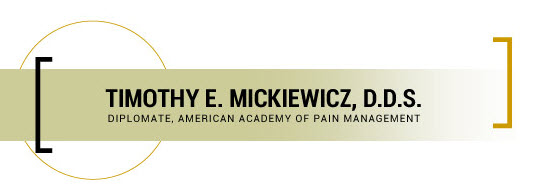
Millions of Americans suffer from some form of TMJ disorder. This condition can be caused by a number of factors, including trauma, bruxism (teeth grinding), arthritis, malocclusion, genetics, and more. All orofacial structures work harmoniously together for optimal oral health. Therefore, if one element is “off”, it can either cause TMD or exacerbate the condition. Today, Dr. Timothy E. Mickiewicz explains how a worn dental bridge can contribute to TMJ disorder.
If you’re in Sacramento, CA and you have a worn dental bridge, schedule a consultation with Dr. Mickiewicz. Contact our practice at 916.469.9178.
How an Improper Bite Affects the TMJ
When the teeth are out of proper alignment, the bite can become unbalanced. This is why bruxism is commonly linked to TMD. When the teeth become eroded, chipped, or cracked, the bite changes. As a result, the jaw muscles work overtime to compensate.
Worn dental bridges can affect the bite in the same way. Over time, these restorations can erode, chip, or fracture. Even the tiniest changes to the bite can affect the jaw joints and surrounding muscles. If you suddenly notice jaw pain that wasn’t there before, an old dental bridge could be to blame.
How to Fix the Problem
There may be some instances in which a bridge can be repaired. However, if the restoration is old and worn, there is really only one solution: placement of a new dental bridge.
When your original bridge was placed, it (hopefully) fit in perfectly with your natural teeth and occlusion. Over the years, as things change, you may have noticed small differences in the way your bite felt. In many cases, a worn bridge causes the bite to close too much. As a result, the facial muscles try to keep the jaw in its previous position; it just has to work a lot harder to do it. A new dental bridge opens the bite back up to its proper position, allowing the jaw muscles to relax.
Of course, every patient is unique. Therefore, there could be more than one factor contributing to TMJ issues. During a consultation with Dr. Mickiewicz, he can develop an effective treatment plan for you.
Combining Dental Bridges with Custom Oral Appliances
If Dr. Mickiewicz determines that a worn bridge was the cause of TMD, it’s important to do everything we can to prevent the problem from happening again. To do this, he may recommend a custom oral appliance, or a night guard. This device fits comfortably over your teeth and protects your teeth while you sleep. This is especially important if you suffer from bruxism. The night guard cushions the teeth – and your restorations – to prevent damage. Talk with Dr. Mickiewicz to find out if oral appliance therapy is right for you.
Other Tips to Reduce TMD Symptoms
In addition to a new dental bridge and a night guard, there are other ways to reduce the symptoms associated with TMD. While these methods may not work for everyone, many patients find them helpful:
- Physical therapy: Jaw exercises can help relax the facial muscles and alleviate discomfort.
- Medications: In some cases, medications may be necessary to help address problems related to TMD.
- BOTOX®: These injections can actually be quite helpful for treating TMD. BOTOX relaxes the associated muscles, providing relief for about three to four months.
Contact Our Sacramento, CA Practice Today
If you suspect your dental bridge is causing TMJ problems, schedule a visit at our practice. You can call us at 916.469.9178 or contact us online.


